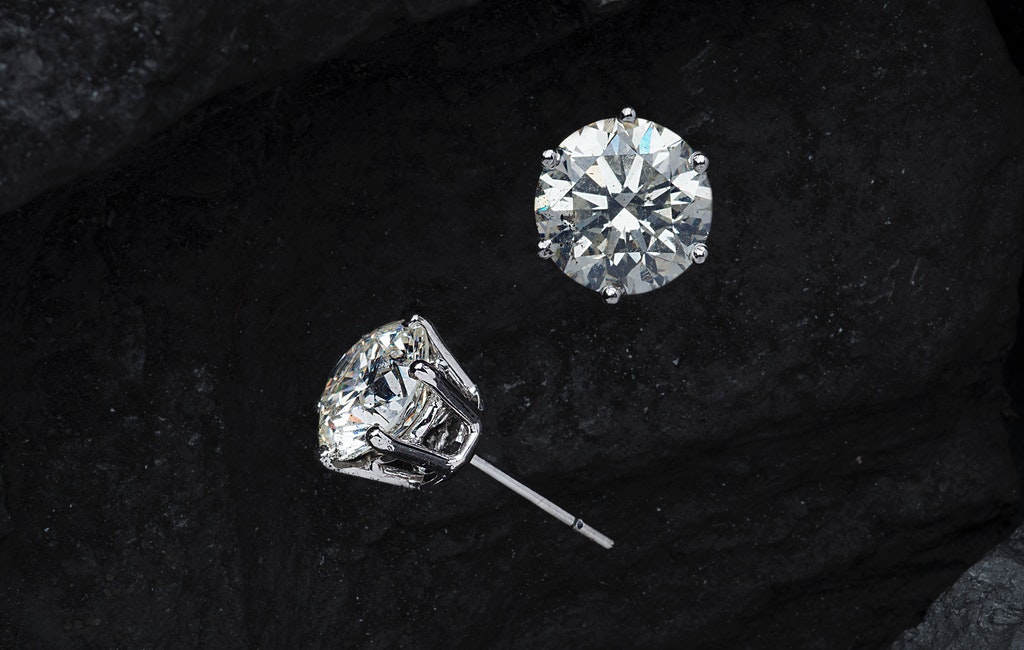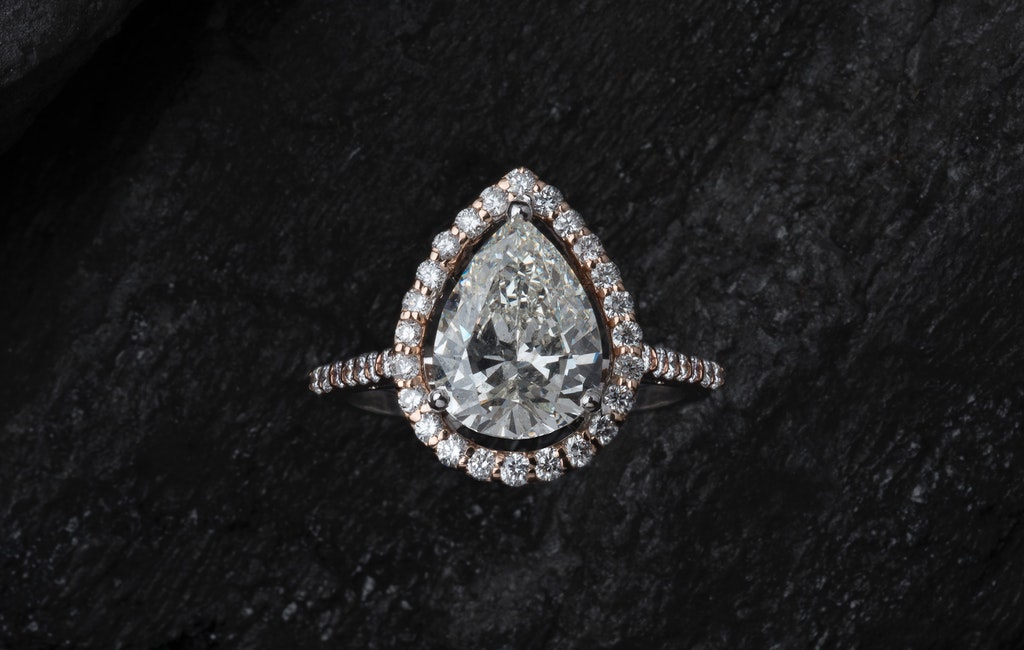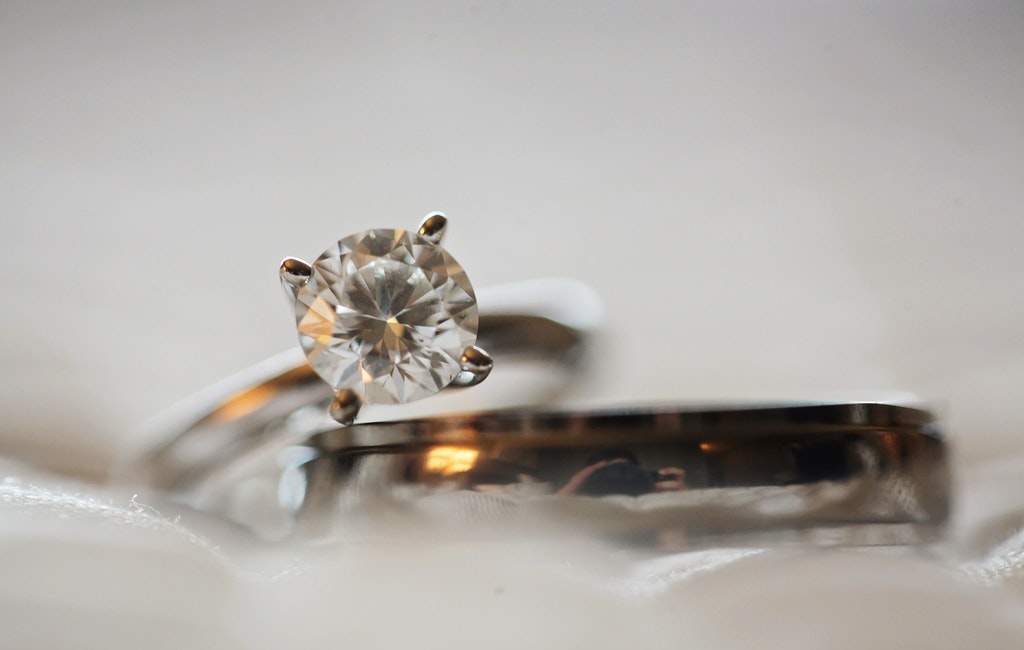About 100 miles below the surface of the Earth, in the upper mantle, diamonds are created. In that region of the Earth, it is undoubtedly incredibly hot. The combination of high temperature and high pressure is what is required for the growth of diamond crystals in the Earth. There is also a lot of pressure due to the weight of the overlying rock pressing down. That’s a region of the Earth we can’t directly sample, but as far as we know, that’s where all diamonds that have ever originated in the Earth have done so. There is no possibility for us to drill down to that depth or to access the Earth’s upper mantle in any other way.
How do diamonds travel to the surface of the Earth?
Therefore, the diamonds that are visible at the surface are those that have been exposed by a very buried volcanic outburst. It was a highly unique eruption that took place long ago in the history of the Earth and was supposed to be quite violent. Such eruptions have not occurred recently.
That’s presumably why those eruptions were more deeply embedded; they occurred probably when the earth was hotter. The diamonds that had already grown in the upper mantle were subsequently transported to the Earth’s surface by these eruptions. The diamonds are encased within a pile of volcanic material that was created when the eruption reached the surface and later cooled. Usually, the sources are these so-called Kimberlites.
The process of the Kimberlite eruption bringing the diamonds from the upper mantle to the surface of the Earth had to happen very quickly because otherwise they would have literally turned into graphite along the way. This is one of the things we know, therefore, about any diamonds that were brought to the surface. They essentially become locked within the diamond structure by moving swiftly.
These eruptions, these Kimberlite pipes going to the surface, may have been flowing at rates of 20 to 30 miles per hour after the diamonds had been moved from high temperature to low temperature very fast—and by quickly, we mean in a matter of hours. The carbon atoms are locked into place after the diamonds are brought to the surface and cooled rather quickly, and there is just insufficient energy to begin rearranging them into graphite at this point.

What is carbon’s role in forming diamonds?
Since diamonds are composed of carbon, they begin as carbon atoms that link together at high pressure and temperature to create crystals. Carbon atoms will form this extremely strong sort of bonding where each carbon atom is connected to four other carbon atoms due to the temperature and pressure present under these circumstances. Because each carbon atom participates in four of these extremely strong covalent bonds that form between carbon atoms, this is why a diamond is such a hard substance.
Thus, you end up with this hard substance. Again, the origin of the carbon and the rate of growth are still unknowns, but it is clear that the circumstances exist for some group of carbon atoms to be close enough to one another to begin bonding. They will attach on as more carbon atoms come into the area.
Any crystal grows in the same manner. This repeating network, or structure, of carbon atoms is created by the process of atoms locking into place. Eventually, this structure enlarges to the point where it forms crystals that we can see. Literally billions and billions of carbon atoms had to lock into place to make this extremely ordered crystalline structure in each of these crystals, each diamond, each one carat diamond.
What are some possible sources?
In certain instances, the carbon appears to have come from the Earth’s mantle, meaning that it was already present in the planet. In other instances, there is odd evidence that points to the possibility that the carbon may have come from the Earth’s surface. This carbon might have actually been carbon that was a component of carbonate sediments or animals, plants, shells, or anything else that was transported down into the Earth’s upper mantle by the plate tectonics process known as subduction.
How long does it take diamonds to form?
Really, we have no idea how long it takes. Attempts to date inclusions in various diamond components have been made, but they have mainly been unsuccessful. Diamonds may form over timescales ranging from a few days, weeks, or months to millions of years. Usually, it’s not a continuous process, like with many crystals that develop on Earth.
The diamonds may begin to grow and then experience a halt due to a change in circumstances (conditions, temperature, pressure, source of carbon, etc.). They may then sit for millions or hundreds of millions of years before beginning to grow once more. Things don’t always happen constantly on Earth, which is an issue when attempting to assign them any form of growth period.
In the lab, we are able to recreate circumstances and grow diamonds. However, there are some steps we must take in order to develop diamonds in a lab that are not clear from the way it occurs naturally. Usually, they are generated in a lab, but a catalyst is used. The growth of diamonds is frequently accelerated by the addition of certain metals, yet these same catalysts are not seen in the diamonds found in the Earth’s upper mantle.

How old are diamonds?
As far as we know, diamonds have existed on Earth for a very long time. In the first couple of billions of years of the Earth’s existence, the majority of diamonds were likely formed. There have been found to be diamond occurrences that are younger; the Kimberlite rock itself is perhaps only tens of hundreds of millions of years old. Usually, inclusions of other minerals in the diamond that can be radioactively dated are used to date diamonds.
There is no way to date the stones themselves. However, if the mineral inclusions include particular substances that may be utilized in a radioactive dating method, such as potassium, then you can estimate the age of the diamond by dating the inclusion in the diamond. And those dates consistently imply that the gems are quite old. At least a billion years old, but usually between one and three billion years old, indicating that the earth was probably warmer then than it is now and that conditions may have been better for the development of diamonds.
Types of diamonds
Natural diamonds
The kind and amount of impurities that are present in natural diamonds determine their classification.
The majority of naturally occurring diamonds are of type Ia, and they can include up to 0.3 percent nitrogen.
Type Ib diamonds are extremely uncommon (less than 0.1 percent) in nature, but they make up the majority of synthetic (industrial) diamonds. Up to 500 ppm of nitrogen can be found in them.
Type IIa diamond – These diamonds are extremely rare and have nitrogen content that is so low that it cannot be easily detected using standard IR or UV absorption studies.
Extremely uncommon in nature is the kind IIb diamond. These are p-type semiconductors because the nitrogen content is so low (even lower than type IIa) (due to uncompensated B acceptor impurities).
Synthetic Industrial Diamond
Since the early 1950s, they have been produced using a method known as high pressure, high temperature synthesis (HPHT). This is an attempt to reproduce the environmental factors that lead to the deep-earth formation of natural diamonds. High temperatures and pressures are applied to graphite in a sizable hydraulic press, and with the inclusion of a metallic catalyst, the process produces diamond over the course of a few hours. This process yields diamond crystals that are typically a few mm in size. These crystals are too imperfect to be used as gemstones, but they make excellent hard-wearing edges for drill bits and cutting tools.
Diamond Colours
Are you unsure of the best diamond color? Everything Begins With Your Budget.
The most valuable and rarest type of diamond is one that lacks color. While most of our customers select a D or E color grade, many opt for a stunning near colorless grade to stretch their dollars further and purchase the greatest cut they can afford (which gives them more sparkle).
The size, shape, and setting preferences of the diamond you are considering will play a role in your decision regarding whether or not you want to spend extra on the diamond color grade. Understanding how color impacts these aspects can help you save money.
In large diamonds, color is more apparent.
Consider purchasing an I, J, or K color diamond if you’re purchasing a diamond under 1 carat. Going beyond one carat? Diamonds with a color grade of H or better are advised.
Diamond Color Recommendations Considering Shape and Setting
Some fancy-shaped diamonds can be up to 25% less expensive than round-cut diamonds while concealing color better than others. It’s also a good idea to think about the precious metal hue for your setting that best matches the diamond’s color grade. For instance, yellow gold emits a warm glow and looks best when paired with colorless diamonds. A nearly colorless diamond will appear icier if it is set in platinum or white gold.
Conclusion
Now you know how diamonds are formed, whether it be natural or synthetic. Which do you prefer?

